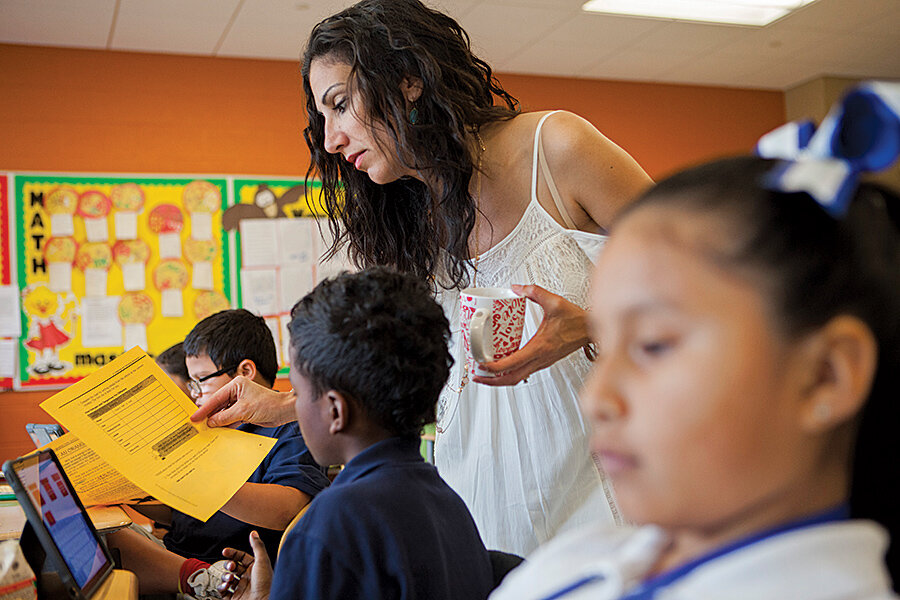Arts that enrich, engage, and enhance
Loading...
There’s little doubt that STEM education – science, technology, engineering, and math – is important for young people. Fact-based problem-solving, anchored in proven rules and methods, helps students develop their thinking. It builds employable skills. It is crucial to productivity and competitiveness in a global economy. You wouldn’t want engineers designing a bridge based only on what looked hip. You probably wouldn’t feel comfortable on a passenger jet piloted by improv jazz guys with no flight training.
The hard sciences should be the foundation of education. But they shouldn’t be there alone. STEM needs art. STEAM education – which adds design, music, performance, creative writing, mixed media, and the like to the sciences – unites utility with beauty. You’ll see why this matters in a Monitor cover story (click here).
Stacy Teicher Khadaroo takes us inside Roosevelt School, in a tough neighborhood of Bridgeport, Conn. Beginning in 2011, as one of the first Turnaround Arts initiative schools championed by first lady Michelle Obama, Roosevelt transformed itself and its students by incorporating arts classes that lack of funding had long ago forced the school to set aside. As students were encouraged to develop artistic skills, disciplinary problems fell and reading comprehension rose. While math proficiency at Roosevelt has not yet turned around, other Turnaround schools have logged significant improvement in that area.
Important as those achievements are, however, the real magic of the Turnaround Arts idea is how it has boosted student engagement. By nurturing artistic talents, Roosevelt and similar schools have become more interesting and practical to students. Theorems, themes, and formulas are more palatable as part of a curriculum that also encourages creativity, that lets students say “listen to this,” “watch what I can do.” Whole-student education helps schools compete with the many distractions of the digital world and the school’s-not-cool culture that can predominate in some neighborhoods. The more attractive education becomes, the more students are likely to stick with it.
So art has social utility. But that’s not all there is to art. Standardized tests reward literacy, numeracy, and scientific knowledge. Those are some measures of intelligence. Developmental psychologist Howard Gardner has argued that in various degrees everyone also has musical, visual, athletic, and other forms of intelligence that standard IQ tests don’t capture or value. In an age when computers have come to dominate information, math, and science, those other forms of intelligence are a human competitive advantage.
Which is not to say that the arts are a digital-free zone. Musicians, dramatists, and visual artists have long employed technology in creative ways – from the deus ex machina of Greek playwrights to the electronica of Brian Eno and other musicians. Whether produced laboriously and lovingly in a cloistered studio or by coding instructions into a database, art enriches life.
Art has too long been considered dispensable. But science and art are inseparable – for students and for all of us. As long as they were also science guys, I would fly on that airplane piloted by jazz guys. The next thunderstorm could require some improv.








